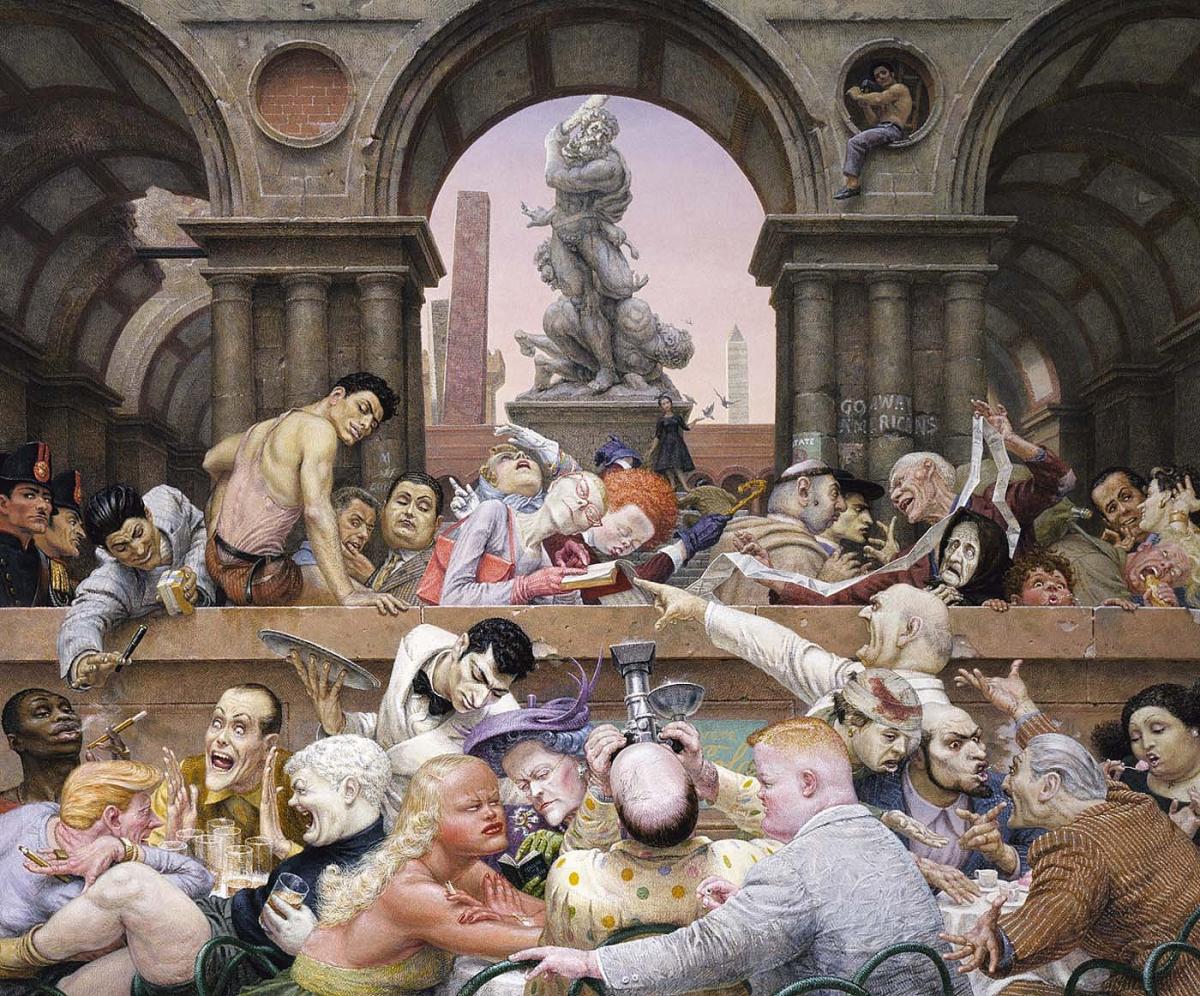
In the light of the historic Supreme Court decision on Monday barring discrimination against LGBTQ+ workers, I wanted to share some conversations that we’ve been having inside the museum concerning our LGBTQ+ artists and how we present their artwork and discuss their lives.
Last year, we started June with a big community bash, “Countdown: Pride Celebration Kickoff Party.” Bright lights, smiling faces, dancing friends, energizing performances, and tours of SAAM’s collection through an LGBTQ+ lens came together in a night to remember—especially now, when we can’t get together to do it again as planned and any carefree convening seems far off.
Now is also a good opportunity to reflect on what we learned from that experience, and the curatorial considerations the gallery talks, in particular, sparked. For that one evening, SAAM curators and scholars led pop-up discussions in front of works from our collection created by LGBTQ+ artists. While engaging visitors in person, it was easy to layer in aspects of biography that included sexual identity, and then consider if and how that might influence how we read the artwork. These chats were wide-ranging and illuminating. Afterwards, participants shared how much they appreciated knowing LGBTQ+ experiences were reflected in our collection. Later that week, I looked at the labels that accompanied these works (and others) and realized that we do not convey to our audiences in a sustained way that the diversity of the United States, including in sexual orientation, is indeed on view at SAAM.
Yet, digging into the implications of adding LGBTQ+ attributions or interpretations to the very brief texts that accompany certain works, it is clear there can be no one-size-fits-all, quick, editorial fix. For example, since we rarely if ever mention the sexuality of a heterosexual artist, would this raise concerns about treating LGBTQ+ artists differently? Also, as many deceased artists in our collection lived in times when such things were not discussed, and certainly not publicly promoted as relevant to their work, should we be “outing” them based on historical research now coming to light? And regardless of when they lived, as we increasingly recognize gender and sexual identities as fluid, how would we describe their sense of self in this regard, unless it is part of the existing record?
On the other hand, should the heteronormative expectations of the past, which made it dangerous to speak from an LGBTQ+ perspective, continue to control what might now be publicly recognized and considered significant? By continuing to keep old secrets, are we hiding the true breadth of the ways artists’ lived and loved (and created) over the centuries from our contemporary audiences? Are we denying LGBTQ+ audiences in particular a chance to see themselves in the stories we share? These are truly delicate and nuanced debates that will continue. I am interested to hear readers’ perspectives—your insights would be invaluable as we look to future installations of works from the museum's permanent collection.
Let’s continue the conversation. Send your comments to AmericanArtInfo@si.edu.
Saisha Grayson is SAAM’s curator of time-based media. A companion blog post that looks at identity for a particular work, My Dreams, My Works Must Wait Till After Hell, will be published next week.
Share your Pride with us! Join us online for a series of Pride activities for the whole family, including a Facebook Live Drag Queen Story Time on June 27 at 10 a.m. Free, registration required.





















